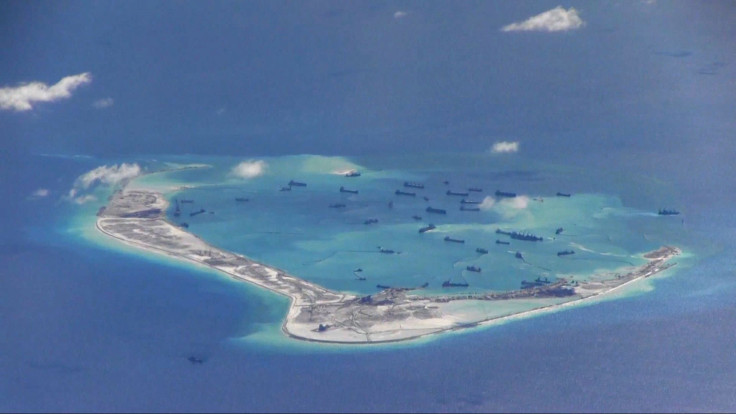South China Sea: Chinese Ships Have Left, Philippines May Still Protest

The Philippines confirmed Thursday that Chinese coast guard ships had left an area in the disputed South China Sea, but stressed the ships’ recent presence in the region may be used to bolster its arbitration case against Beijing in a ruling expected to be handed down in May.
The Philippine Department of Foreign Affairs, in a statement late Wednesday, said defense authorities reported seeing the ships at the Quirino or Jackson atolls two weeks ago although “there are no more sightings of the Chinese vessels as of today.”
“The Department is monitoring reports on the situation on the ground and reiterates its call for China to exercise self-restraint from the conduct of activities that could complicate or escalate disputes in the South China Sea and affect peace and stability in the region,” it said in a statement.
Speaking in Beijing Wednesday, Chinese Foreign Minister Hong Lei confirmed its vessels were at Jackson Atoll to salvage a ship that had run aground in the area and was abandoned by its owner at the end of last year. Chinese rescue boats had to tug the grounded vessel for proper disposal, but had already left, he said in comments posted at the website of the Chinese Embassy.
“During the operation, the Chinese side advised fishing boats near the waters to stay away for navigation security and operation safety. The Chinese ships have returned after the operation,” he said.
Nonetheless, Hong stressed that China had “indisputable sovereignty” over the area, even as it remains willing to work with claimants to fully implement a code of conduct governing actions in the disputed sea territory.
The Philippine Star on Wednesday reported that Chinese vessels have been seen in the area for about a month, citing Eugenio Bito-onon, mayor of the nearby Kalayaan island group. The report said local fishermen had been “chased away” by the Chinese.
The atoll is near the Philippine-occupied Lawak Island and Mischief Reef, which China has occupied since the 1990s under Philippine protest.
Foreign office spokesman Charles Jose told International Business Times Thursday that the Philippines was “studying carefully” whether a formal diplomatic protest over the latest incident is to be lodged, noting that a Netherlands-based tribunal hearing the arbitration case was due to make its ruling soon.
“The arbitration case is almost done and we’re just waiting for the tribunal’s final decision,” Jose told IBT. “But the latest Chinese action could be subsumed under our complaint that China is depriving us of our sovereign rights and jurisdiction over our marine entitlement,” he said.
China claims most of the sea region, and has been stepping up its occupation by building or expanding islands and territories, despite its claim that it would maintain the status quo to prevent an escalation of tension.
The sea region is believed to be sitting atop vast mineral deposits and it straddles key shipping lanes. Overlapping claims could be a potential flashpoint of conflict, security analysts have warned.
Apart from China and the Philippines, the waters are also claimed wholly or partly by Brunei, Malaysia, Vietnam and Taiwan.
Last month, Vietnam protested China’s alleged installation of missiles in the Paracel Islands, just days after calling for more United States involvement in the South China Sea.
U.S. President Barack Obama has called on China to stop reclamation projects, and has sent warships to the area as part of its “freedom of navigation operations.” The Philippines has also received old U.S. ships to beef up its small navy and this week signed an agreement to get military equipment from Japan.
© Copyright IBTimes 2024. All rights reserved.




















